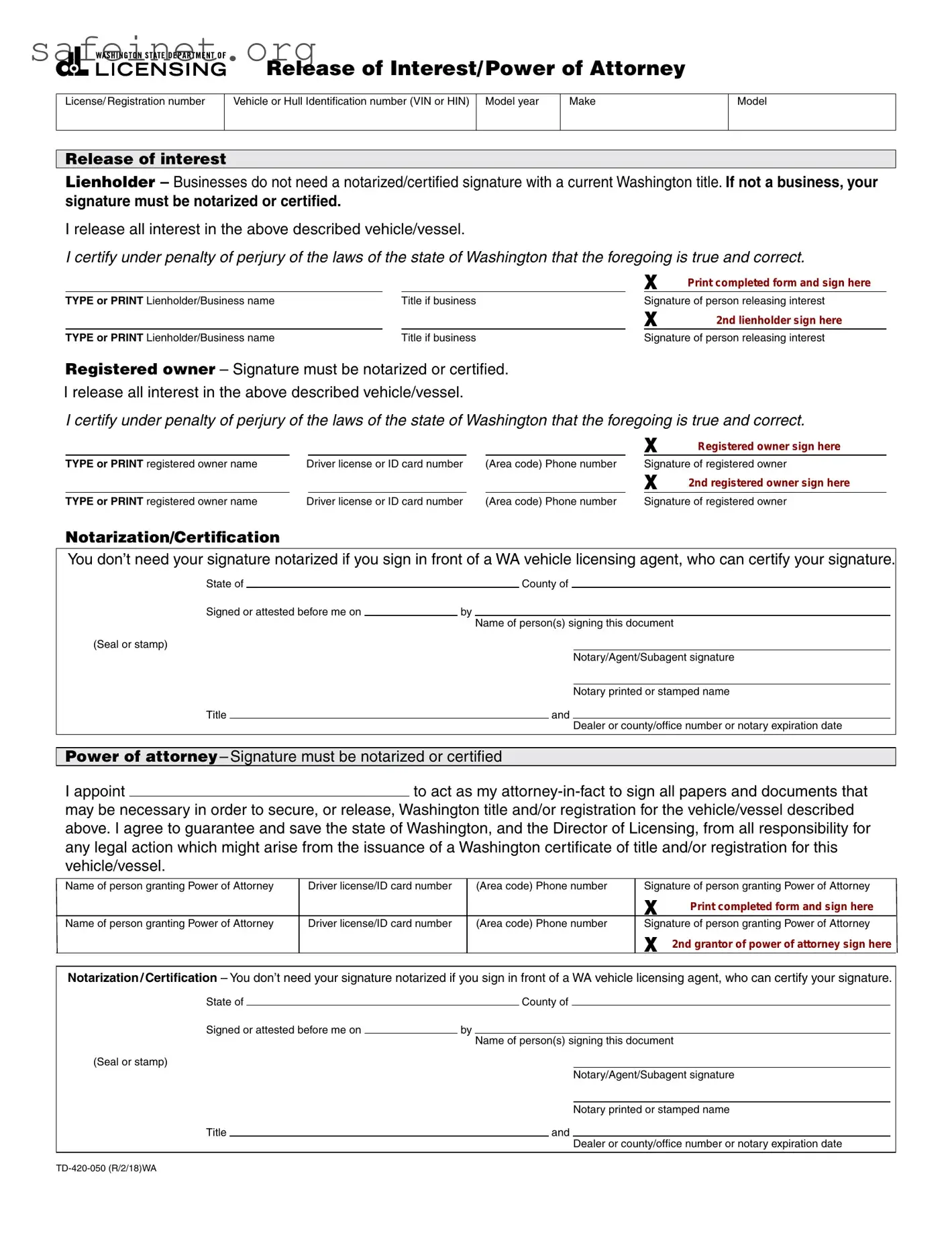What is the Vehicle POA form TD-420-050?
The Vehicle POA (Power of Attorney) form TD-420-050 is a legal document that allows an individual to grant authority to another person to act on their behalf regarding vehicle-related matters. This could include tasks like transferring vehicle ownership, registering a vehicle, or managing related paperwork.
Who needs to complete this form?
This form is typically completed by vehicle owners who need to delegate authority to someone else. This could be useful in situations such as selling a vehicle when the owner is unable to be present or handling registration issues through a representative.
What information is required to fill out the form?
To complete the TD-420-050 form, the vehicle owner's details are needed, including name, address, and driver’s license number. Additionally, details about the vehicle, such as make, model, year, and VIN (Vehicle Identification Number), must also be included. The representative's information will be required as well.
Is the Vehicle POA form TD-420-050 valid in all states?
While the TD-420-050 form is primarily used in specific states, its acceptance may vary. It is advisable to check with local motor vehicle departments or legal authorities to confirm if this form is recognized in your state and for the intended use.
Do I need witnesses or notarization for this form?
In many cases, the Vehicle POA form does not require witnesses or notarization; however, some jurisdictions may have specific requirements. It's essential to verify local rules to ensure that the form meets all necessary legal standards.
How long is the POA valid once submitted?
The duration of validity for the Vehicle POA form can vary depending on state laws and the details specified within the document itself. Often, it stays effective until the task is completed or until the vehicle owner revokes it. The vehicle owner may note specific expiration dates or conditions in the form.
What should I do if I want to revoke the Vehicle POA?
If you wish to revoke the Vehicle POA, you should notify the person you appointed as your representative and provide them with a written notice of revocation. You may also need to submit a formal revocation notice to your local motor vehicle department, depending on the requirements in your state.

